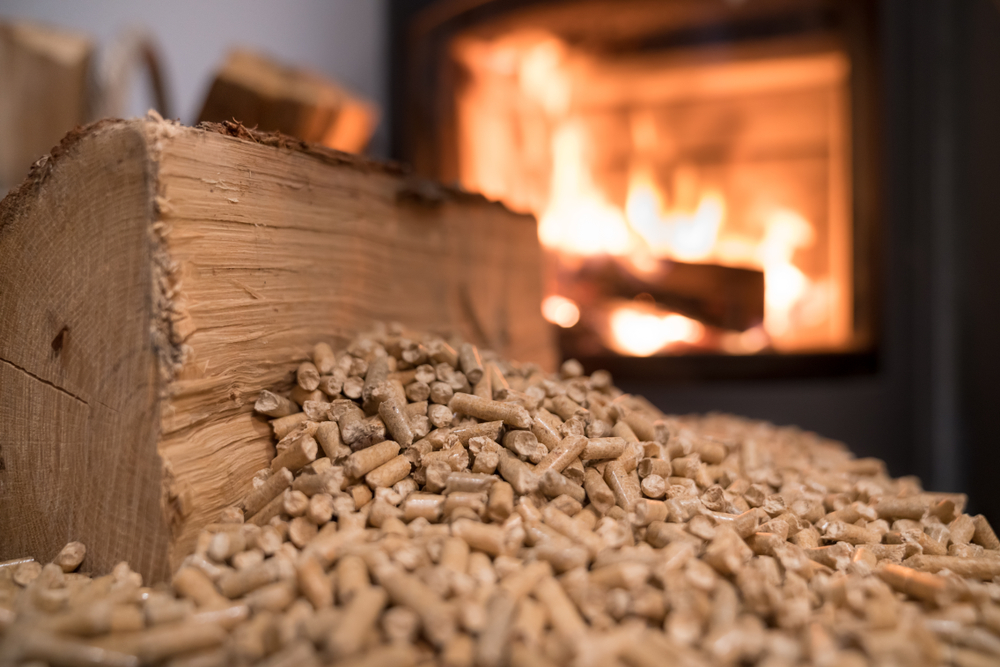Wood Pellet Stoves Explained by PH Winterton
P.H Winterton is one of the countries leading suppliers of biomass fuel, which is fueled by wood pellets recycled from our sawmill waste collection service.
For this blog, we are going to talk you through how wood pellet stoves work and why you should consider using one.
How Do Wood Pellet Stoves Work?
Wood pellet stoves do look similar to wood-burning stoves and fireplaces but they are a more environmentally friendly and low-cost heating option.
In a time when climate change and environmental awareness is at the forefront of many home and business owners minds, they have become even more popular.
The wood pellet that power the stoves look similar to rabbit food and are considered eco-friendly because they are cheap and easy to manufacture. They also have a very low pollution rate.
The Mechanics of Wood Pellet Stoves
Wood pellet stoves operate with electricity, with pellets loaded into the hopper which is either located on the top or bottom of the unit. The auger is a motorised device which delivers the pellets from the hopper into the burn pot with the auger’s speed determining the stove’s temperature.
The burn pot is based in the combustion chamber and is then ignited creating a hotter flame because of how heavily compressed and dense and low in moisture the pellets are. The pot serves as a carburettor for the stove, mixing the air and fuel which creates combustion with the ashes from the burnt pellets captured in an ash pot which needs cleaning periodically.
Unlike a regular fireplace, pellet stoves heat a room through convection, which is the transmission of heat that occurs from a forced combination of cool and hot air currents. The convection blower pulls cool air in from the room, passing over the fire in the burn pot and makes the flame hotter enabling the pellets to burn evenly and efficiently.
The heated air will move across a heat exchanger, designed to transfer clean air into your home through the room blower. This heat exchanger acts like a furnace when used in combustion because its located in the combustion chamber preventing the outside of the stove becoming too hot.
The exhaust blower will push out gases from a narrow pipe in the back of the stove. This can also be vented into an existing chimney or connected to the outside through a small hole. Although a chimney isn’t a mandatory requirement, the exhaust blower is more effective when the pipe is installed at a vertical angle.
Your wood pellet stove is operated by a thermostat which controls the number of pellets that the auger feeds into the combustion. Put simply, the more pellets equals more heat.
The Benefits of Wood Pellet Stoves
Wood pellet stoves are quite small with a bag of pellets being the size of a mulch bag, which makes them easy to store. They are also easy to operate – only requiring pellets to be loaded and the flame to be ignited. Depending on the size of your stove’s hopper it could also require loading once a day.
With the fire contained in a heat box inside the unit, there is little smoke which lessens the smell around your home and stops the outside of the stove from heating up. Pellets also create considerably less ash than firewood, giving off less creosote which is a flammable byproduct of combustion which can build up and lead to chimney fires.
Because wood pellets are made from recycled materials their moisture content is lower, with dry fuel creating more heat which causes the pellets to burn hotter and cleaner than wood counterparts. The stoves also emit fewer pollutants than regular fireplaces plus they are considered carbon-neutral because the pellets are made from trees that lived on carbon, so the two cancel each other out.
Finally, wood pellets can be purchased in smaller quantities and are much cheaper than buying a cord of firewood.
Leading Suppliers of Biomass Fuel
If you are looking for the finest quality of biomass fuel, please do not hesitate to contact P.H Winterton today.
Our wood pellets are produced from top quality sawmill waste and residue from sawmills all over the country.

